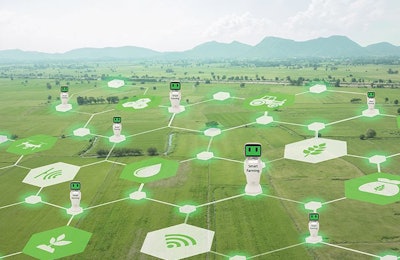
Farm intelligence is a buzzword in the industry. But what does it actually mean?
Essentially, it’s a combination of new technology and observation techniques, along with data science to improve poultry health, welfare and biosecurity, as well as business efficiencies. Farming in a smart way will also put us light years ahead in areas that are important to consumers, such as environmental sustainability and food chain transparency.
Technology is getting smarter, and breeding companies are leveraging the latest advances to keep up with a growing global need for chicken meat.
Optimizing farm efficiency
To achieve the greatest impact, we must farm data, not just chickens. Using modern sensors and monitoring systems, we’re able to collect data in real time, and analyze it to achieve optimum environments for birds, along with feed and processing efficiencies. Thus, we can advance bird health and welfare, while reaping big economic benefits for farmers in ways that were never before possible.
We can set and watch conditions for temperature, humidity and airflow. In the same way, bird comfort levels can be assessed through their body temperatures and air quality factors such as carbon dioxide and ammonia. Sensors known as flow meters can send alerts when water lines are broken and, when conditions become unacceptable, farmers can be notified on their personal devices 24/7.
The massive amounts of data we gather from our farms can be compared with forecasts and processing targets. Collecting and analyzing data puts us in control, and this means greater efficiency.
Conserving water, environment, farming costs
Real-time bird growth rates and health conditions can also be closely observed using sensors and monitors. Feed nutrition and amounts can be adjusted for ideal bird wellness, livability and efficiency. Feed efficiency in itself reaps benefits on multiple levels. Think about it: The highest operational cost is feed, and thanks to advances in selection techniques that improve the conversion of feed to meat, farmers can now feed more birds with less feed.
Consider the impact of greater feed efficiency on the environment. Less feed for chickens means less water and farmland needed for feed grain. That land can be repurposed for conservation, or the grain not used for chicken feed can feed people. Our water supply, which is depleting, is better conserved.
Putting the consumer in control
Consumers want to know where their food comes from. By combining technology, such as scanners, and blockchain to track each step in the value chain, we’re able to provide more transparency. So, by simply scanning a chicken on a smartphone, consumers can see, for example, the name and location of the farm where it was raised and the location of the processing facility.
Biosecurity: The answer to security of supply
Robots are roaming modern poultry houses, performing a variety of tasks, from cleaning and sanitizing, preventing floor eggs and monitoring environmental conditions to alerting farmers when conditions threaten bird health, comfort and biosecurity. And, thanks to farm intelligence, in some areas of the world an ID card must be scanned when someone enters a poultry facility, revealing information such as name, health status and previous farms visited. Similar systems are in place for egg trucks and feed deliveries -- so farmers can track activity and reduce disease risks, ensuring a secure supply of poultry.
Farm revolution
As we approach the challenge of feeding the world, poultry farming must respond with newer, smarter and more efficient production methods. We need to harness technologies and data mining to improve efficiencies and respond to a more engaged consumer. Advances in modern technology mean big production improvements for each link in the value chain.















